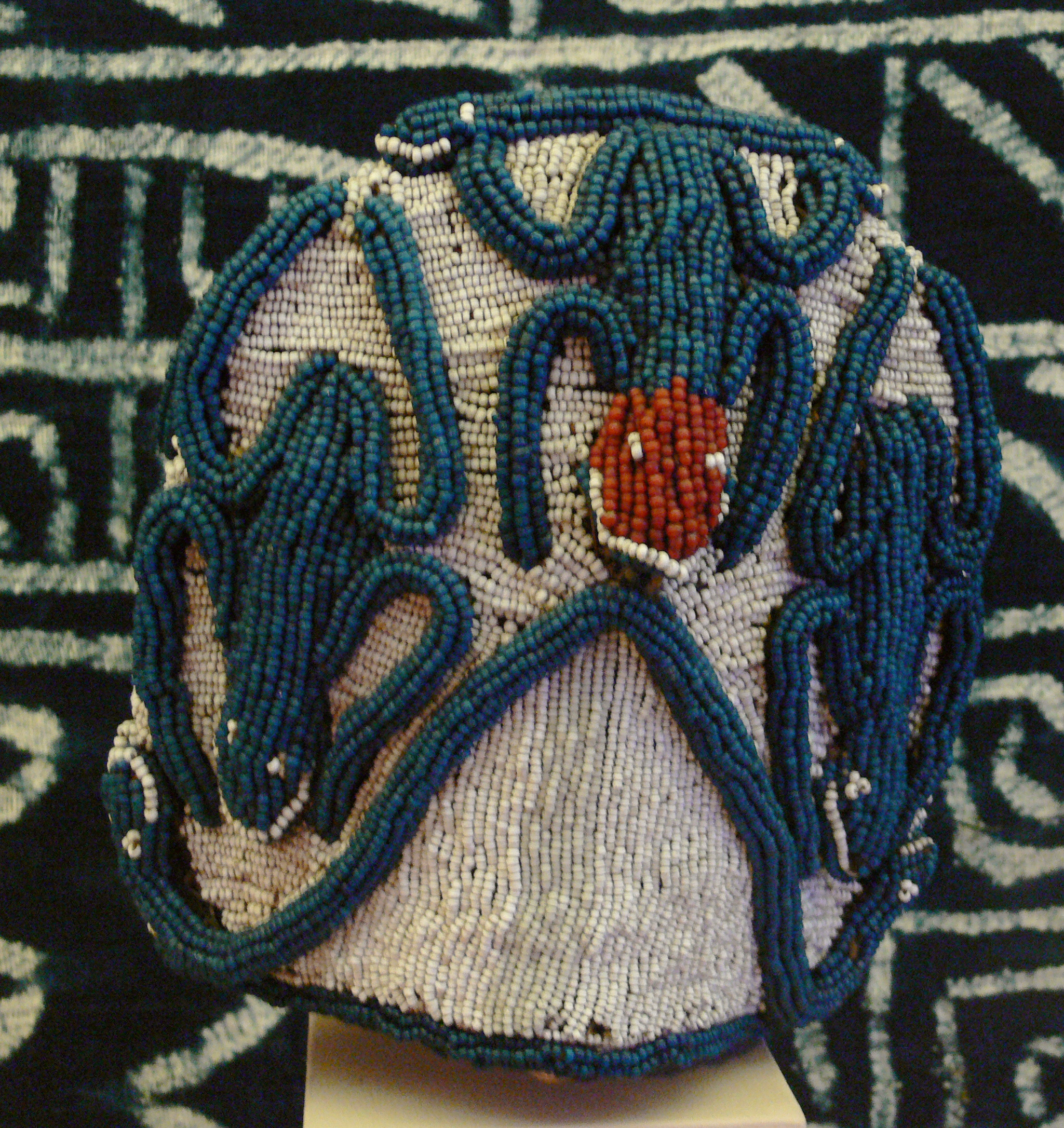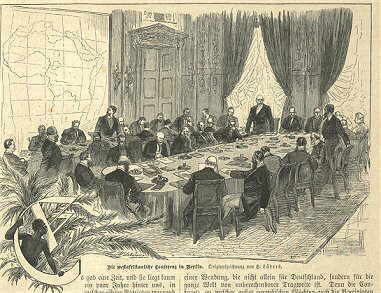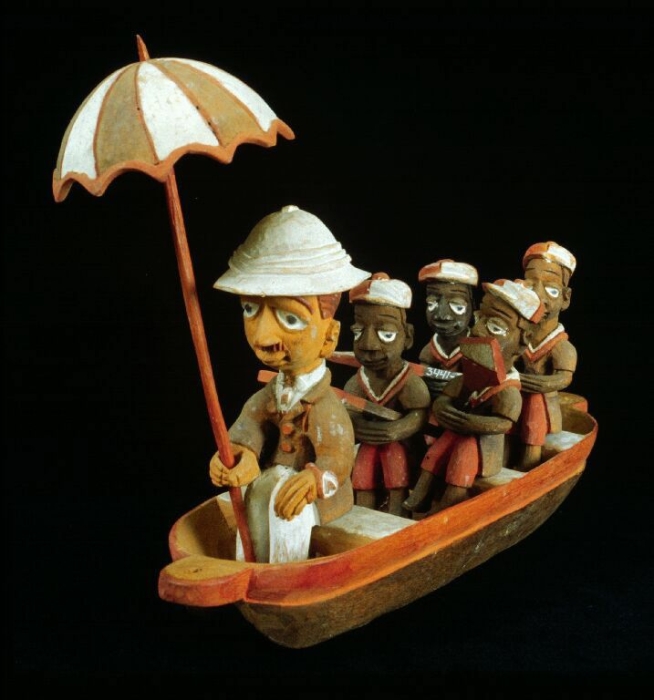|
Nso People
The Nso people are from the Bamenda grass fields Northwest Region of Cameroon. Their traditional language is Lamnso (language of Nso) and their capital is Kumbo – where the Palace of the Fon is found. Summary History The Nso’ people migrated from Tikari in the Adamawa Region of Cameroon when there was a bloody succession after the death of Chief Tinki in 1387. The enthronement of Mveing as successor of Tinki sent all rivals to the throne away from Kimi. Ngonnso’, the founder of the Nso’ dynasty, left Kimi with a few followers together with her brothers Nchare Yen and Mbombam and their respective followers. After parting company with her brothers, Ngonnso’ and her followers first settled in Mbo’nso’, then later to Ndzennso’, Kovifem, Taavisa (for security), back to Koovifem, then to Kimbo (Kumbo). The tribe got its name from Ngonnso’, and is one of the largest tribes of Cameroon. Government Pre-colonial period The Fon is the traditional ruler. He is both ... [...More Info...] [...Related Items...] OR: [Wikipedia] [Google] [Baidu] |
Northwest Region (Cameroon)
The Northwest Region, or North-West Region () is one of ten regions in Cameroon. Its regional capital is Bamenda. The Northwest Region was part of the Southern Cameroons, found in the western highlands of Cameroon. It is bordered to the southwest by the Southwest Region, to the south by the West Region, to the east by the Adamawa Region, and to the north by Nigeria. Various Ambazonian nationalist and separatist factions regard the region as being distinct as a polity from Cameroon. In 1919, the Northwest Region became solely administered by the United Kingdom. In 1961, the region joined the Cameroon. Separatists from the Ambazonia administration regard both the ''Nord-Ouest'' (Northwest) and ''Sud-Ouest'' (Southwest) regions as being constituent components of their envisaged breakaway state. Administration The Northwest Region (known before 2008 as the Northwest Province) is the third most populated province in Cameroon. It has one major metropolitan city, Bamenda, with sev ... [...More Info...] [...Related Items...] OR: [Wikipedia] [Google] [Baidu] |
Cameroon
Cameroon (; french: Cameroun, ff, Kamerun), officially the Republic of Cameroon (french: République du Cameroun, links=no), is a country in west-central Africa. It is bordered by Nigeria to the west and north; Chad to the northeast; the Central African Republic to the east; and Equatorial Guinea, Gabon and the Republic of the Congo to the south. Its coastline lies on the Bight of Biafra, part of the Gulf of Guinea and the Atlantic Ocean. Due to its strategic position at the crossroads between West Africa and Central Africa, it has been categorized as being in both camps. Its nearly 27 million people speak 250 native languages. Early inhabitants of the territory included the Sao civilisation around Lake Chad, and the Baka hunter-gatherers in the southeastern rainforest. Portuguese explorers reached the coast in the 15th century and named the area ''Rio dos Camarões'' (''Shrimp River''), which became ''Cameroon'' in English. Fulani soldiers founded the Adamawa Emirate in th ... [...More Info...] [...Related Items...] OR: [Wikipedia] [Google] [Baidu] |
Lamnso
Nso (''Lamnso'', ''Lamnsɔ’'') is the Grassfields language of the Nso people of western Cameroon. A few may remain in Nigeria. It has ten major noun classes. The ISO 639-3 code is lns. Nso is spoken by over 100,000 people. Writing System Nso uses an orthography based on the General Alphabet of Cameroon Languages (AGLC). An orthography had initially been created before being modified to follow the recommendations of the AGLC. Nso uses 23 digraphs et 7 trigraphs . Long vowels are indicating by doubling the vowel . Diphthongs are noted . The high tone is indicated with the acute accent and the low tone with the grave accent on the vowel. Phrases * Thank you. * You are welcome. * What news? (Greeting). * No news (Reply) or I am fine. * Good morning. * How did you sleep? * Good afternoon. * Good evening. * Sleep well. * Good bye until tomorrow. * Sweet dreams. * And to you. * God bless you (Greeting). * Good luck. * Safe journey. * Give me. * Where are yo ... [...More Info...] [...Related Items...] OR: [Wikipedia] [Google] [Baidu] |
Kumbo
Kumbo, also known as Kimbo, is the second-largest city in the North West Province of Cameroon and the capital of Bui Division. It lies about 2000m above sea level and is situated approximately 110 km away from Bamenda (the provincial capital of the North West Province), on the Bamenda Highlands Ring Road. Kumbo has a population of 80,212 (at the 2005 Census) and is split into three distinctive hilly settlements of Tobin, Mbveh, and Squares. The town is known for horse racing (Tobin Stadium ) and traditional medicine, and also for its palace (Nso Palace), a market and two hospitals (Shisong Hospital Kumbo Council - Health, aKumboCouncil.org - Health last accessed October 16, 2008 & Banso Baptist Hospital ). Kumbo is the capital city of the Nso Kingdom of the Nso people. The lingua franca is Lamnso but Pidgin, English, Oku, Djottin, Fulfulde, French and Hausa are spoken. The first German settlers were Missionaries of the Sacred Heart who arrived in 1912 and established their ... [...More Info...] [...Related Items...] OR: [Wikipedia] [Google] [Baidu] |
Nso Mütze Linden-Museum 33548
NSO or Nso may refer to: N.S.O. * NATO Standardization Office * Netherlands Space Office * National Statistics Office (Philippines) * Nationale SIGINT Organisatie, the Netherlands * National Safeman's Organization of safe technicians, US * National Socialist Order, the rebranded name of Atomwaffen Division * National Solar Observatory, U.S.A. * National Symphony Orchestra (other), orchestras of several countries * Nigerian Security Organization, security forces 1976-1985 * Nintendo Switch Online * NSO Group (Niv, Shalev, Omri), an Israeli phone spyware company * Non-qualified stock option * Non-Skating Official in roller derby Nso * Nso people of Cameroon ** Nso language (ISO 639-3 language code: lns) Other uses * Northern Sotho language (ISO 639-2 language code: nso) * Scone Airport (IATA airport code: NSO), Upper Hunter Valley, New South Wales, Australia * Aerolíneas Sosa (ICAO airline code: NSO), Honduran airline * Nashipur Road railway station (train station c ... [...More Info...] [...Related Items...] OR: [Wikipedia] [Google] [Baidu] |
Fon (Cameroon)
A Fon is a chieftain or king of a region of Cameroon, especially among the Widikum, Tikar, and Bamiléké peoples of the Bamenda grass fields (the Northwest, West Region) and the Lebialem of the South West Region. They were a creation of German colonial rule to facilitate their governance. Many legitimate traditional rulers were replaced those who collaborated imposed and made Fons, while the British and French consolidated them as administrative traditional Chiefs an still considered as auxiliaries of the administration. They were only once independent family heads because the ethnic groups had cultural traditional leaders who weren't called Fons. For instance, the Tikars had Belaku for their original female traditional leaders of their kingdoms called Ngoung (Belaka) for the male leaders. Germans created and brought most Fons under German rule or military subjugation during the colonial period and it has remained so till date. Following the defeat of Germany in World War I, ... [...More Info...] [...Related Items...] OR: [Wikipedia] [Google] [Baidu] |
Berlin Conference
The Berlin Conference of 1884–1885, also known as the Congo Conference (, ) or West Africa Conference (, ), regulated European colonisation and trade in Africa during the New Imperialism period and coincided with Germany's sudden emergence as an imperial power. The conference was organized by Otto von Bismarck, the first chancellor of Germany. Its outcome, the General Act of the Berlin Conference, can be seen as the formalisation of the Scramble for Africa, but some historians warn against an overemphasis of its role in the colonial partitioning of Africa, and draw attention to bilateral agreements concluded before and after the conference. The conference contributed to ushering in a period of heightened colonial activity by European powers, which eliminated or overrode most existing forms of African autonomy and self-governance. Of the fourteen countries being represented, six of them – Austria-Hungary, Russia, Denmark, the Netherlands, Sweden–Norway, and the Un ... [...More Info...] [...Related Items...] OR: [Wikipedia] [Google] [Baidu] |
Indirect Rule
Indirect rule was a system of governance used by the British and others to control parts of their colonial empires, particularly in Africa and Asia, which was done through pre-existing indigenous power structures. Indirect rule was used by various colonial rulers: the French in Algeria and Tunisia, the Dutch in the East Indies, the Portuguese in Angola and Mozambique and the Belgians in Rwanda and Burundi. These dependencies were often called " protectorates" or "trucial states". By this system, the day-to-day government and administration of areas both small and large were left in the hands of traditional rulers, who gained prestige and the stability and protection afforded by the Pax Britannica (in the case of British territories), at the cost of losing control of their external affairs, and often of taxation, communications, and other matters, usually with a small number of European "advisors" effectively overseeing the government of large numbers of people spread over extensi ... [...More Info...] [...Related Items...] OR: [Wikipedia] [Google] [Baidu] |
Cutlass
A cutlass is a short, broad sabre or slashing sword, with a straight or slightly curved blade sharpened on the cutting edge, and a hilt often featuring a solid cupped or basket-shaped guard. It was a common naval weapon during the early Age of Sail. Etymology The word "cutlass" developed from the 17th-century English use of "coutelas", a 16th-century French word for a machete-like mid-length single-edged blade (the modern French for "knife", in general, is "couteau"; in 17th- and 18th-century English the word was often spelled "cuttoe"). The French word "coutelas" may be a convergent development from a Latin root, along with the Italian "coltellaccio" or "cortelazo"; meaning "large knife". In Italy, the "cortelazo" was a similar short, broad-bladed sabre popular during the 16th century.Ossian, RobThe Cutlass(accessed Jan. 25, 2015) The root "coltello", for "knife", derived ultimately from the Latin "cultellus" meaning "smaller knife"; which is the common Latin root for both the I ... [...More Info...] [...Related Items...] OR: [Wikipedia] [Google] [Baidu] |
Raffia Palm
Raffia palms (''Raphia'') are a genus of about twenty species of palms native to tropical regions of Africa, and especially Madagascar, with one species (''R. taedigera'') also occurring in Central and South America. ''R. taedigera'' is the source of raffia fibers, which are the veins of the leaves, and this species produces a fruit called "brazilia pods", "uxi nuts" or "uxi pods". They grow up to tall and are remarkable for their compound pinnate leaves, the longest in the plant kingdom; leaves of ''R. regalis'' up to long and wide are known. The plants are monocarpic, meaning that they flower once and then die after the seeds are mature. Some species have individual stems which die after fruiting, but have a root system which remains alive and sends up new stems which fruit. Cultivation and uses Fiber Raffia fiber is produced from the membrane on the underside of the leaf fronds. The membrane is taken off to create a long thin fiber, which can be rolled together for added ... [...More Info...] [...Related Items...] OR: [Wikipedia] [Google] [Baidu] |






.jpg)
